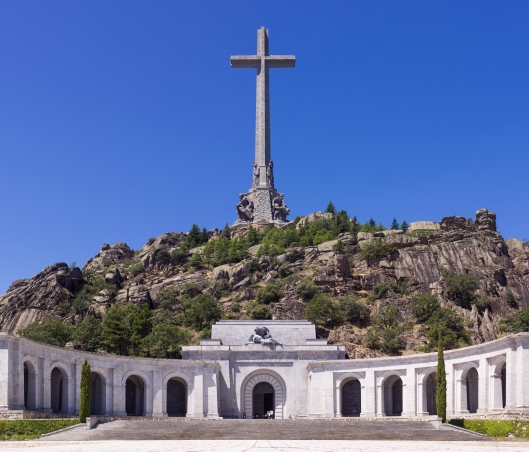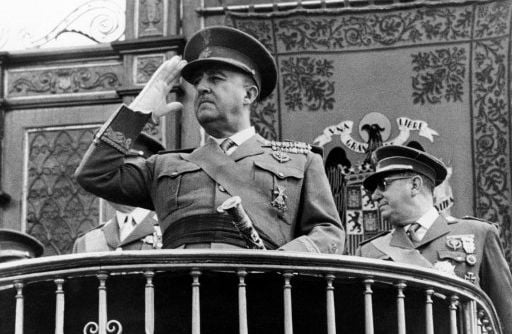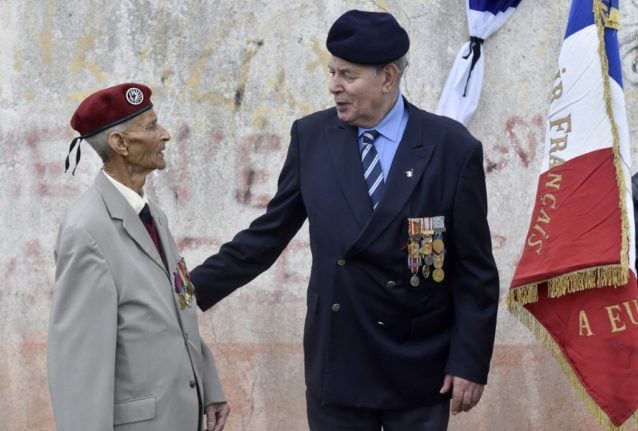I was a young school boy living in Madrid when Spain’s long-standing dictator Francisco Franco died in 1975.
On the evening of November 20th, the country’s prime minister, a rodent-like man called Arias Navarro, appeared teary eyed on TV, dramatically announcing ‘Franco has died’ as though no one had been expecting the news.
But Franco’s death didn’t come as a surprise to anyone at the time, the wonder was that he had survived for as long as he did.
Struck down by a series of strokes in October, Franco fell into a coma and languished in a hospital bed for almost a month. The dictator’s death throes became the subject of much mirth at the time, albeit from behind closed doors. I remember my father’s work colleagues at the state airline Iberia coming round for dinner and cracking jokes about the ailing despot’s condition – one of them pledged to release a white dove the day Franco kicked the bucket (he kept his word).
Even at my school, which was hardly a hotbed of liberal thinking as it was run by strict Augustine priests, there were kids openly running around impersonating Franco, jokingly clutching their chests and pretending to collapse mid-speech.

Franco’s been reburied – now’s the time for a mature and open debate on the despot’s legacy
As expected, the state propaganda machine churned out a very different story. Anyone today watching the grainy TV footage of the thousands who filed past his open casket would think the entire country grieved. It is a deeply skewed picture, but one that seems to be spurring today’s francoists, both young and old.
I thought this while watching last week’s news footage of the dictator’s exhumation from the Valley of the Fallen mausoleum, when a group of francoists outraged at the ‘desecration’ of their hero’s remains, proudly displayed a banner that said ‘Franco Lives’.
Juan Chicharro, the president of the Francisco Franco foundation, an association that pays lip service to fascism and openly honours the dictator, went so far as to claim that the exhumation was a ‘betrayal’.
It shows that acting prime minister Pedro Sánchez was on a hiding to nothing when his government decided to transfer the body to a modest Madrid cemetery in a bid to redress the crimes committed by the regime.
Even before Franco’s relatives began carrying the coffin out of the mausoleum in the full glare of the TV cameras, it was pretty clear they had decided to make the most of their ‘15 minutes’ of fame.
Tensions were high and inevitably a small fracas ensued between the Civil Guard and a cluster of relatives just outside the chapel where Franco’s body was reburied. One of them shouted in outrage ‘This is a dictatorship!’, but it was impossible to tell if he was being sarcastic or simply hadn’t bothered to read up on Spain’s history circa 1936-1975.
The whole episode turned into a tasteless reality show because Franco’s entitled relatives were allowed to grandstand on TV. In hindsight, the government had perhaps been a tad too deferential and should have simply loaded the dictator’s coffin into a white van in the middle of the night and quietly handed it over to his relatives to do as they saw fit.
The media circus was an unnecessary distraction from the other pertinent issue here – the monument’s raison d’etre.
READ MORE:
- IN PICTURES: Franco exhumed, transported by helicopter, and reburied as Spain takes step towards reconciliation.
- What next for the Valley of the Fallen?

The Valley of the Fallen mausoleum is a painful reminder of Spain’s recent history
Essentially Franco’s brainchild, it was devised in 1940 when it seemed that international fascism would emerge victorious from WWII. The regime later conveniently claimed that the Valley of the Fallen was intended to honour all the Civil War dead, and while it’s true that the remains of almost 34,000 combatants from both the Nationalist and the Republican sides lie together, the only graves with names were those of Franco and the leader of the extreme right-wing Falange party, Jose Antonio Primo de Rivera.
In practice the monument became a focal point for Franco loyalists. It’s a shrine to death and suffering, and about the intimidatory hold of the Church and the State over its people.
There are now moves afoot to transform the monument into a centre for reconciliation dedicated to the memory of the 500,000 people who died during the 1936-1939 conflict.
There’s resistance even to this idea from conservatives, who are determined to bury the past, arguing that it will re-open old wounds.
But they’re being disingenuous. Just as a mental health professional will instruct a patient to undergo therapy to address deep-seated trauma, Spain must hold a wide-ranging, all-inclusive debate on the impact the war and the regime had on the country, just like South Africa did over apartheid.
Whatever nationalists would like to believe, the truth is that francoism was destined to die along with the dictator. It was a hotchpotch of ideas designed solely by and for Franco, based on a mix of traditional Catholicism, the glorification of Spanish history, and a hatred of communism, jewry, anglo-saxons and masonry.
None of this resonates with the aspirations of a modern, 21st century European nation – it’s time to bury this piece of deeply disturbing nostalgia.
Richard Torné is a journalist and author based in southern Spain. He also plays in a band. Follow his writings on Word Press and on Twitter



 Please whitelist us to continue reading.
Please whitelist us to continue reading.
Member comments